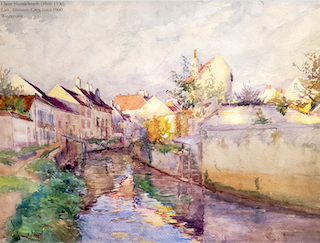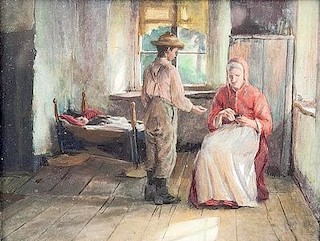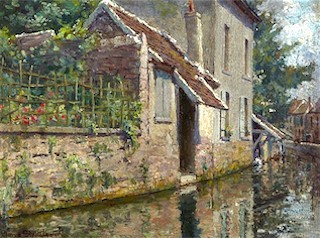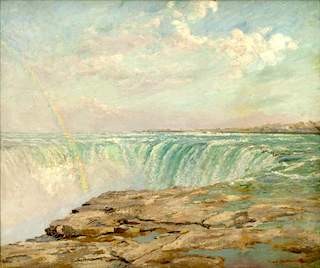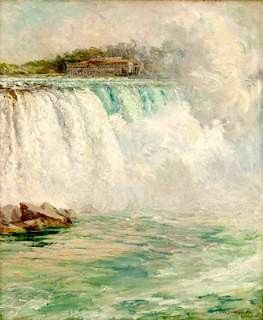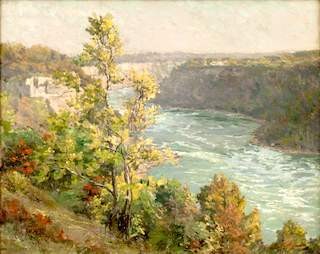Claire Shuttleworth, 1867 – 1930
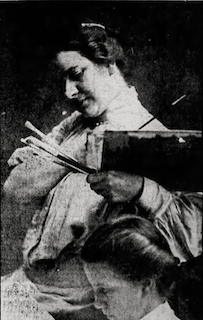
Is there any life, I wonder, which brings one in touch with as many different types of humanity as that of the artist, which brings one so many interesting friends, of all classes, and is not that perhaps one of the reasons why we still keep on painting in spite of our many discouragements? (Claire Shuttleworth cited in The Buffalo News, May, 6, 1925, p. 6).
Claire Shuttleworth was born in 1867 in Buffalo, New York to Henry J. Shuttleworth, a native of London, England, and Laura J. Wheeler of Vermont. Her father was a prominent private banker in Buffalo. She had a sister and a brother who founded and headed the Banner Milling Co.
Claire first studied music at the St. Agnes school in Albany, where she discovered her interest in painting and drawing, graduating with honors in both music and art. She then taught music for two years at the Gunnery boy’s school in Washington, Connecticut. At the Buffalo Art Students’ League (named Treasurer of the League in 1894), she studied under Canadian painter George Bridgeman, head instructor of the League in the 1880s. In an interview, she claimed that her studies in the U.S. laid solid foundations for her future career.
When Lizzie, her sister, died in 1891, she willed all her belongings to Claire who was only 24 at the time. Three years later, Claire left for Europe, which led to a series of trips to France and Italy that spanned a five-year period beginning in 1894.
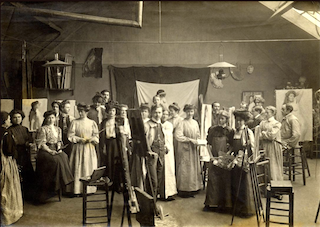
In May of that year, she sailed to France with muralist Frank Vincent Du Mond and his class of 40-50 young women, including artists Marie B. Coxe and Frances Plimpton. Du Mond’s Buffalo studio burned while he was away, including the painting titled “The Holy Family,” which had been attributed a medal at the 1890 Salon des Artistes français. Well acquainted with the Académies in Paris, Du Mond had trained with Gustave Boulanger, Jules Joseph Lefebvre, and Benjamin Constant at the Académie Julian between c. 1889 and 1891. He was also an associate of the Académie Vitti and exhibited at the Salon des Artistes français in 1889, 1890, 1891, 1892, 1896, 1897, and 1898.
Du Mond introduced Claire to the newly founded (1889) Académie Vitti, one of the first to accept female students, and to allow women to sketch nude male models. Here, she trained under painter and muralist Louis-Joseph-Raphaël Collin and painters Paul Leroy and Luc Olivier Merson. She even received a medal from the Académie for painting from life (c. 1899). Some of the other American women artists at the Académie in the 1890s were Sara S. Hayden, Janet Scudder, Gertrude Weill (who designed a poster advertising the school), and Enid Yandell. According to different newspaper accounts, when she later came to Paris, Claire also trained at the Académies Julian (it seems under sculptor and painter Jean-Paul Laurens) and Colarossi.
In October of 1894, she and Frances Plimpton returned to Buffalo, where she showed the works she had painted in Crécy-en-Brie, the town where Du Mond had brought his out-of-door sketch class. She received only praise for the work she had accomplished – praise that would only increase in the years to come. One comment, which recurs in the pen of future critics, is very telling of the times:
Another gift which Miss Shuttleworth has is one that is rare among women artists – the ability to develop (sic) a strength and force in her paintings that characterizes the work of men. There is very little about any of her canvases that indicate that they were done by a woman (Buffalo Courier, November 25, 1894, p. 13).
Claire Shuttleworth lived at the Girls’ Club at undetermined periods of time. She showed several paintings at the 1896 and 1897 exhibits of the American Woman’s Art Association hosted at the Club (The Buffalo Enquirer, February 4, 1897, p. 5). By 1896 she lists addresses in the Club’s immediate vicinity, first with M.A. Moreaux at 106 bd. du Montparnasse (1896, 1899) then with the art restorer M.P. Havard at 123 bd. du Montparnasse (1897, 1998), but these may have just been the places from which her works were sent to the Salon exhibit.
In the summer of 1895, Claire returned to Europe, first to Italy, where she stayed in Florence, not far from where Du Mond was hosting his class. During the winter, she stayed in Paris and exhibited, “In an Italian Courtyard” (a girl carrying a copper pail in a shadowy corner) at the Mai 1896 Salon des Artistes Français. In the summer, she and L. Grace Woodward joined noted Buffalo portraitist and landscapist Frank C. Penhold in Pont Aven, returning to Paris in September, and sailing for the U.S. in January 1897.
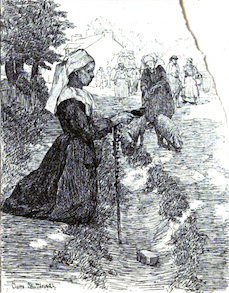
That same year, Claire returned to Paris in May, where two of her paintings had been accepted to the June Salon des Artistes français: “À la Foire” and “Une rue à Pont Aven.” She then returned to Crécy-en-Brie for the summer, leaving for Italy in September, only to return to Paris in 1898, where she exhibited “Le Marché” at the Salon des Artistes Français. She returned to New York City in October 1898, where she was to meet her father, only to discover that he had died in his room at the Hotel Imperial in New York City. Funeral services took place in Buffalo.
In November, Claire opened a studio for painting and teaching languages in the newly built Berkeley Apartments building. The Buffalo Evening News provides a small description of her studio where friends and visitors gathered for her daily afternoon teas:
[…] spick and span and quite unlike the usual atelier […] The studio is interesting because it is very unlike to a woman’s workplace. Florentine carved oak chair of the 17th century, an old walnut kitchen bench from Flanders doing duty for a fashionable tête-a-tête under the weight of silken pillows, with some rare pieces of foreign pottery, are all that suggest “accessories,” everything else the production of the brush, among them the “Street at Pont Aven” was exhibited at Buffalo Society of Artists last spring (February 17, 1899, p. 11).
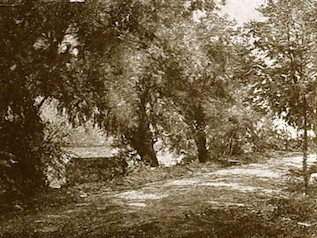
Over the years, her studio (here and elsewhere) would not only be a workshop for herself and her students, but also an exhibition space, and social center, but when she opened it, the art scene in Buffalo had not yet blossomed, as the “Social Chronicle” of The Buffalo Evening News bemoaned:
Buffalo so far has refused to take art up seriously, or in that lighter vein, as a fad. Talk as we will, put up our lorgnettes and look as much as we may at old masters, new masters and masters in between, we serve as a whole to perform the offices of a wet blanket whenever art and artists seek headway in our midst. Buffalo does, it is true, maintain an art school, but it is maintained meagerly […] Paris alone maintains only one or two less than a half hundred free night art schools, let alone day schools galore. But however much Buffalo lacks in art atmosphere and art patrons, we have here artists we may be proud to recognize and encourage: artists who have not only learned the best that American schools have to teach, but who have gone abroad and studied earnestly the technique which makes the French school famous, and who have afterward practiced what they have learned on the famous Italian skies and sunsets, on the picturesque peasantry of France and Holland, and who have now come home and settled down in our city, and only ask – sometimes in vain – that encouragement which every city rightfully owes its artists (January 17, 1899, p. 10)).
Artists like Claire Shuttleworth, Alice B. Muzzey, Clara Sackett, Elsie (sometimes spelled Elise) Devereux, the Garretson sisters, Lilly and Della, and their male counterparts did much to improve this state of affairs in Buffalo. To paraphrase an article in the Buffalo Evening News (November 17, 1899, p. 3), one could go so far as to say, they sought to add the power of their brush to the growth of art in their own city by inviting guests for tea to their studios, arranging for private showings of their work, joining group shows, exhibiting with the Buffalo Society of Artists and the Albright Gallery, and giving talks about their experiences in Europe and elsewhere.
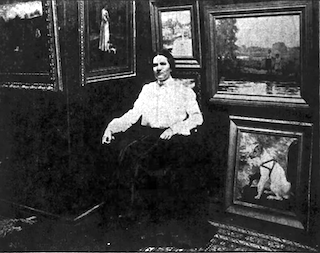
It seems that Claire did not travel to Europe until 1907 due to her family’s bereavement, but she was quite active teaching, exhibiting, filling orders for portraits and miniatures, and sketching in Buffalo and other parts of the U.S.: for example, Cazenovia, a small village in New York (1900 and 1904); Beau Pré, near Quebec, a small French village whose “inhabitants still retain the primitive manners and costumes of their French ancestors” (Buffalo Times, July 7, 1901, p. 17); and Glouchester, Massachussets (1903).
She also participated in numerous group exhibits, notably the Pan-American Exposition in 1901, Buffalo’s 1904 Orphan’s Carnival, exhibits of the Buffalo Society of Artists, the Philadelphia Fine Arts Exhibit, the Society of American Artists, the Art Institute of Chicago, the St. Louis Exposition, among many others. She organized solo shows of her work (The Berkey Library – 82 paintings and 6 miniatures; the Morgan Gallery –70 works; the Cazenovia Clubhouse, among others). In addition, her painting, “Paysage” was shown at the 1899 Salon des Artistes français; one of her miniatures was exhibited at the 1904 Salon des Artistes français and her miniature portrait of fellow artist Mary B. W. Coxe, was shown at the 1905 Salon des Artistes français. It was then shown in London at the exhibition of the Women’s International Club, previously known as the Paris Club.
She also moved to a new studio in Buffalo (the Horton building) and opened another studio in Batavia, New York, where she taught painting and drawing.
In April of 1907, she left Buffalo to spend six months in Europe: London, Paris for the Salon exhibitions, followed by sketching trips to Crécy-en-Brie. In July, she was in Gisors, a small commune in Normandy, where, according to Tomasco, she established a private atelier in the Hotel des trois Poissons, staying through September, as the only artist in residence – a far cry from the Pont Aven community, which was teeming with artists from Buffalo and other parts of the world.
Between 1910 and 1912, she designed a summer studio and home, which she named Minglestreams, overlooking the junction of the Niagara and Chippawa Rivers, in Chippawa Ontario. This is where she spent her summers, sketching, conducting classes, and generally observing the flow of the river (Buffalo Morning News, Feb. 9, 1913). Her love affair with the Niagara River area would lead to years of sketches and paintings of the river and the falls, earning her the title of “Mistress of woods and valleys as well as cataracts and falls” (Buffalo Truth 21 feb 1924, p. 7). She described her own fascination with the region in an article she wrote in the Buffalo Arts Journal, cited in The Buffalo News:
From childhood the Niagara has fascinated me. Even after study abroad and various exploration to sketching grounds near home the river still appealed to me as the least painted and most varied in subjects of the places I had visited […] In 1910 I happened to spend a few weeks in Chippawa, which then was a quaint, picturesque, little village and forgotten for a time by “progress” until it had almost the charm of an old-world hamlet, yet within easy access of great cities on both sides of the border and with a wonderful combination of land and water subjects for sketching. There, where the Welland and Niagara Rivers met, I built my summer studio and called it “Minglestreams,” and settled down contentedly to try and accomplish the big task of my life – 24 canvases which would show the varying phases of the river as I knew it and loved it. […] It took eight years of study along the shores before I succeeded in getting together the group of subjects which completed the task I had planned, and, […] the director of the Arnot Gallery in Elmira […] invited me to show the group at her gallery […] (May, 6, 1925, p. 6).
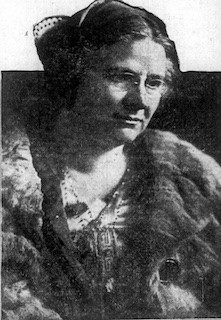
Forty years of intensive work led to hundreds of paintings, sketches, miniatures, and watercolors of portraits, landscapes, cityscapes, waterscapes. An active member of numerous artist associations, she sketched and painted in many different places (England, Nova Scotia, Bermuda, Texas, Canada, Massachusetts, Niagara, Italy), but France remained one of her sites of predilection: while her career as an artist began in Buffalo, it first blossomed in Paris and was later boosted by regular visits and exhibitions.
In the summers of 1926 and 1928, she returned to Europe (mainly England and France), but no information has yet surfaced on where or what she sketched or painted.
Claire Shuttleworth’s long and successful career as an artist, teacher, and active participant in the Buffalo art scene ended on May 7, 1930. She was cremated in the Buffalo crematorium and her remains were buried in Chippawa. She willed her Minglestreams studio to Ethel Louise Stern, and several canvases to Harry Marsalas who had carved many frames for her canvases.
Whatever success I have achieved is no credit to me [...] This was a gift to me and it is my duty to make the most of it. It is just one of the lovely things that has been given to me and I deserve no credit for it. Then too I was given the gift persistence which has aided and made possible the development of the first attribute (Buffalo Truth, June 11, 1925, p. 5).
